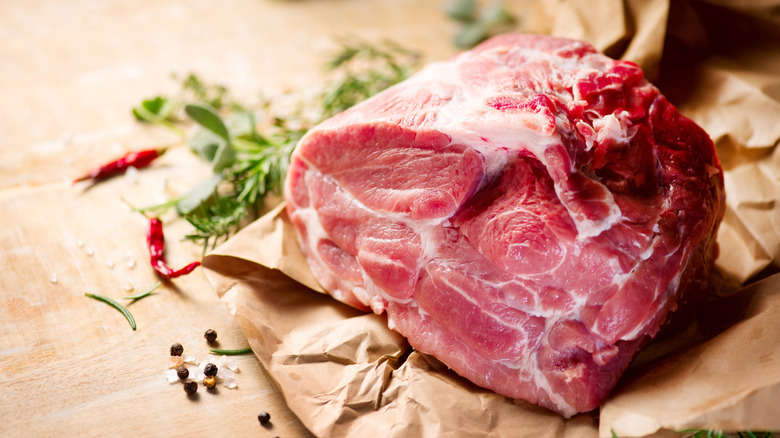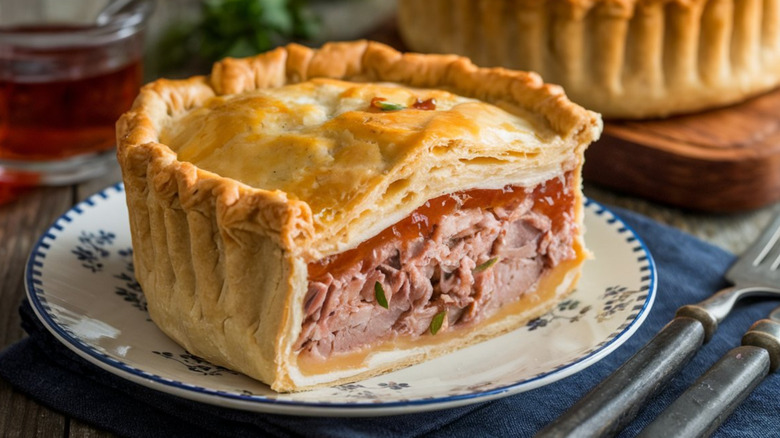Why Pork Became The Star Ingredient In This Beloved European Pie
While the phrase pork pie often conjures images of Buster Keaton or Frank Sinatra in a pork pie hat, the squat, round-crowned chapeau's name comes from a classic English recipe of chopped pork baked in a hard, snappy crust. Though meat pies of all kinds are popular throughout Great Britain, such as beef and potato, chicken and leek, and steak and ale, pork is the most common pie ingredient. This is due in no small part to Melton Mowbray, a small town in Leicestershire; beginning in the 18th century, the excess whey produced by the town's blossoming cheese industry turned out to be an ideal — and at the time free — source of protein-rich provender for livestock, specifically pigs.
While not exclusive to the working class, pork was also an inexpensive source of protein because pigs were easy to raise; as omnivores, they possess a wide and varied diet. Baking chopped pork in a thick crust also served as a way to preserve the meat, making it last just a little bit longer in a world without refrigeration. In addition, pork pie was an easy, portable way to pack a lunch, and in Melton Mowbray, it became popular for the upper echelon to enjoy them while hunting.
Making pork pie
Traditionally eaten at room temperature or cold, a proper English pork pie is generally made of chopped or coarsely ground pork shoulder and pork belly baked in a hot water crust until golden brown. To keep the meat moist, a gelatin-heavy stock, often made from cooking trotters low and slow, is poured through a small hole in the top of the pastry while baking. Although seasonings vary from recipe to recipe, they generally include salt, pepper and other spices such as nutmeg, mace, and sage.
Although they were enjoyed by the working class, many people could only bake pies and breads in communal ovens as they couldn't afford their own. The pork pie gradually became reserved for annual events such as Christmas and some historians believe this may be why it evolved from a dish of preservation into a culinary treat. Today, the humble British pork pie is present at celebratory events of all kinds across the country, from picnics and family reunions to birthdays and weddings. The historic pork pastry has also become gourmet, with chopped pork — cured and fresh — blended with blue cheese, blood pudding, apple, or sage and thyme.

